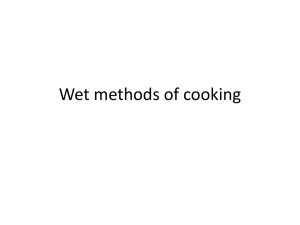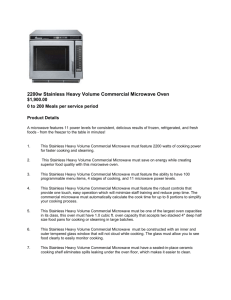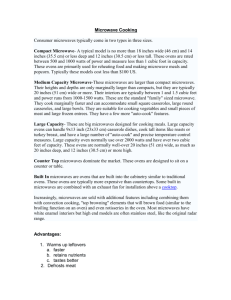ZAP IT!
advertisement
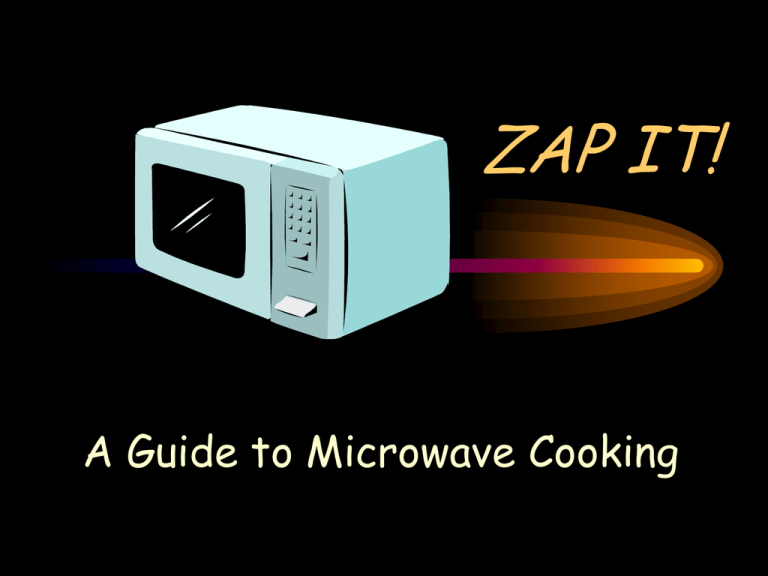
ZAP IT! A Guide to Microwave Cooking Advantages of Microwave Cooking • • • • • • • Saves time Easy to clean up Energy-efficient Saves nutrients Use little or no added fat Cook & serve in the same dish Ideal for convenience foods Power & the Microwave Oven • Higher power setting = more microwaves produced • MW ovens have different power ratings; measured in watts • Don’t use an extension cord with a MW oven; it reduces its power • MW power is reduced if other appliances are on the same electrical circuit Power Settings • • • • • High = 100% Medium-High = 70% Medium = 50% Medium-low = 30% Low = 10% Defrost • To defrost means to remove ice crystals from a food without cooking the food • Defrost setting on a MW is usually 30% power • Follow a defrost cycle with an equal amount of standing time • Cook food immediately after defrosting; do not hold it for later cooking How does a microwave cook food? • Microwaves are short radio waves. • They cause the molecules in food to vibrate. • Vibration creates friction. • Friction creates heat. • Heat cooks the food. • MW penetrate food about 1½ “ deep. In thicker foods, heat is conducted to the center. Microwaves travel in a straight path • Microwaves are reflected by metal. • Microwaves pass through glass, paper, plastic, and wax. • Microwaves are absorbed by water, fat and sugar molecules in food. • Microwaves are attracted to salt; wait until after cooking to salt the surface of a food. Cookware for the Microwave YES • Glass • Most hard plastic • Paper • Some pottery & china NO • Metal • Recycled paper • Food storage containers, such as margarine tubs Shape of Cookware • Ring shape is best choice. • Round is second best choice. • Shallow cookware works better than deep. • Square or rectangular shape is worst choice because corners overcook before center is finished. What is arcing? • Arcing is an electrical spark inside the microwave oven. • It looks like lightning! • It occurs when microwaves connect between two points of metal. • It can cause a fire if flammable materials are inside the MW. • It can damage the microwave oven. Automatic Features on the Microwave • Cook 1/Cook 2 • Defrost/Auto defrost • Preprogrammed touch pads • Sensors • Turntable • Temperature probe When should food be covered? • Covering – holds in steam – keeps food moist – shortens cooking time – cooks more evenly – reduces spatters • Cover with – – Plastic wrap – Waxed paper – Paper towel – Lid Special Microwave Techniques • • • • • Stir, turn or rotate Standing time Pierce Shield Vent How should I place food in the microwave oven? • Arrange foods in a ring. • Arrange foods like the spokes of a wheel. • Leave space between pieces of food. • Arrange with the thickest parts toward the outside of the ring. Factors that Affect Timing • • • • • Hot spots Density of the food Shape of the cookware Size of the food pieces Starting temperature of the food • Amount of food in the oven at the same time • # of watts of the MW oven Testing dishes & containers • Some equipment may not be labeled whether it is MW-safe. • To test: – Place a Pyrex measuring cup of water in the MW. – Place the equipment to be tested NEXT to the measuring cup. – Microwave for 1 – 2 minutes. – Water should be hot, but equipment being tested should still be room temperature. – If it gets hot, do not use it in the MW. How do I convert my favorite recipes for the microwave? • Shorten time to ¼ the conventional time. • Reduce the amount of seasonings. • Reduce the amount of liquid. • Compare to a similar recipe.
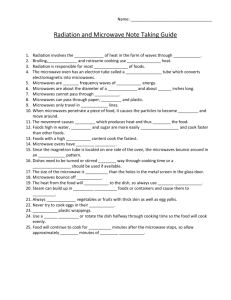
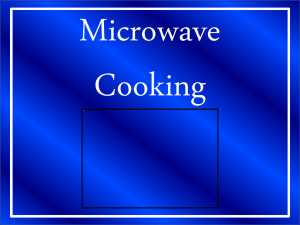

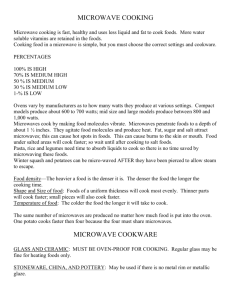
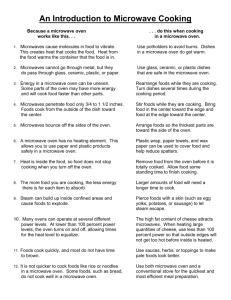
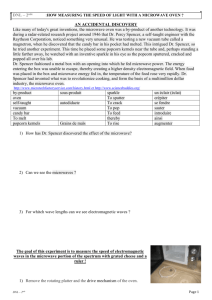
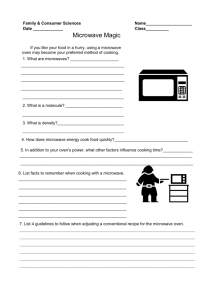
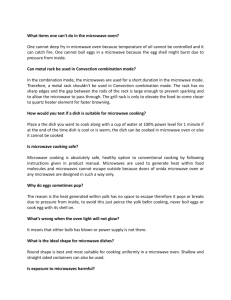
![Chapter 10 2 [MS Word Document, 696.0 KB]](http://s3.studylib.net/store/data/007750455_2-101aefed9620f62461c16ca2baaa473b-300x300.png)
